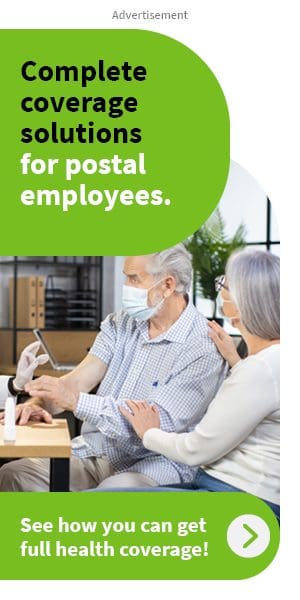Key Takeaways
- The new Postal Service Health Benefits (PSHB) program, managed by the Office of Personnel Management (OPM), is set to impact current and retired postal employees significantly starting in 2025.
- Understanding the transition process, eligibility, and the importance of selecting the right plan under PSHB is crucial for postal employees as they navigate this change.
OPM’s Role in PSHB: What Postal Employees Should Know About the New Program
The Postal Service Health Benefits (PSHB) program represents a significant shift for current and retired postal employees, marking a transition from the Federal Employees Health Benefits (FEHB) program to a new, postal-specific health benefits program. Managed by the Office of Personnel Management (OPM), this new program will affect approximately 1.7 million postal workers and retirees. With an implementation date set for January 2025, it’s essential for postal employees to understand the implications of this change, how it will impact their healthcare coverage, and what steps they need to take to ensure a smooth transition.
Understanding the Shift from FEHB to PSHB
Historically, postal employees and retirees have been part of the broader Federal Employees Health Benefits (FEHB) program, which serves federal workers across various agencies. However, the passage of the Postal Service Reform Act in April 2022 mandated the creation of a separate Postal Service Health Benefits program. The primary reason behind this shift is to alleviate the financial burdens on the U.S. Postal Service (USPS) by ensuring that postal employees and retirees are no longer part of the FEHB pool, which is subsidized by federal government resources.
The Office of Personnel Management (OPM), which oversees federal benefits, has been tasked with managing this transition. OPM will administer the PSHB program, ensuring that it meets the needs of postal employees while maintaining the high standards of coverage provided under FEHB. The new program will mirror the structure of FEHB in many ways, but it will be tailored specifically to the postal workforce, taking into account the unique needs and financial considerations of USPS employees and retirees.
Key Dates and Milestones in the PSHB Transition
The transition to the PSHB program will be phased in over several years, with several key milestones that postal employees should be aware of:
- April 6, 2022: The Postal Service Reform Act is signed into law, mandating the creation of the PSHB program.
- January 2025: The PSHB program becomes operational. This is the date by which all eligible postal employees and retirees will be required to enroll in a PSHB plan if they wish to maintain their health coverage.
- Open Season (Fall 2024): This will be the first opportunity for postal employees to choose a PSHB plan. During this period, employees can compare different plan options and select the one that best meets their needs.
Understanding these dates is critical for postal employees, as missing the enrollment window could result in lapses in coverage or being automatically assigned to a default plan that may not best suit their needs.
Eligibility and Enrollment: Who Needs to Take Action?
One of the most important aspects of the transition to the PSHB program is understanding who is required to enroll and what steps they need to take. Generally, all active postal employees, annuitants, and their eligible family members will need to enroll in the new PSHB program during the initial enrollment period in 2024.
Active Postal Employees
For active postal employees, the transition will be relatively straightforward. During the open season in 2024, they will need to choose a PSHB plan. If they do not take action, they may be automatically enrolled in a default option, which could have implications for their coverage and costs.
Retirees
Retired postal employees will also be required to enroll in a PSHB plan if they wish to continue receiving health benefits. Importantly, retirees who are not yet enrolled in Medicare Part B will need to do so by January 2025 to maintain their PSHB coverage. This requirement aims to align the new program with Medicare and reduce overall healthcare costs for retirees and the USPS.
Family Members
Eligible family members, including spouses and dependent children, will need to be covered under a PSHB plan. It’s crucial for postal employees to review their family’s healthcare needs and ensure that they select a plan that provides adequate coverage for all family members.
Plan Options Under PSHB: What to Consider
While specific details of the PSHB plans are still being finalized, postal employees can expect a range of plan options similar to those currently available under FEHB. These options will likely include Health Maintenance Organizations (HMOs), Preferred Provider Organizations (PPOs), and High-Deductible Health Plans (HDHPs), among others.
When selecting a plan, postal employees should consider several factors:
-
Cost: Although specific pricing details have not been released, it’s important to consider the overall cost of the plan, including premiums, deductibles, and out-of-pocket expenses. Employees should evaluate how these costs align with their budget and healthcare needs.
-
Coverage: Different plans offer varying levels of coverage for services such as hospital care, prescription drugs, and specialist visits. Postal employees should review the coverage details carefully to ensure that the plan they choose meets their specific health needs.
-
Provider Networks: Employees should also consider whether their preferred healthcare providers are included in the plan’s network. Choosing a plan that includes their current doctors and healthcare facilities can help avoid disruptions in care.
-
Prescription Drug Coverage: Given the rising cost of prescription medications, it’s crucial to select a plan that offers comprehensive drug coverage, especially for those with chronic conditions requiring ongoing treatment.
The Role of Medicare in the PSHB Program
For retirees, the integration of Medicare with the PSHB program is a critical consideration. As mentioned earlier, retirees who are eligible for Medicare Part B will need to enroll to maintain their PSHB coverage. This integration is designed to reduce overall healthcare costs for retirees by coordinating benefits between PSHB and Medicare.
Medicare Part B Enrollment Requirement
Starting in January 2025, PSHB retirees will need to be enrolled in Medicare Part B to continue receiving benefits under the new program. For those already enrolled in Medicare, this requirement will not necessitate any action. However, retirees who have previously opted out of Medicare Part B will need to enroll during the special enrollment period in 2024 to avoid penalties and ensure continuous coverage.
Coordination of Benefits
Once enrolled in both Medicare and PSHB, retirees will benefit from the coordination of benefits, where Medicare will serve as the primary payer and PSHB as the secondary payer. This coordination can reduce out-of-pocket costs for retirees, making it a financially advantageous option for many.
Preparing for the Transition: Steps Postal Employees Should Take
With the transition to the PSHB program approaching, there are several proactive steps that postal employees and retirees can take to ensure a smooth transition:
-
Stay Informed: Regularly check for updates from OPM and USPS regarding the PSHB program. This includes reviewing any communications sent via mail or email and attending informational webinars or sessions offered by the USPS.
-
Evaluate Current Coverage: Take the time to review your current health coverage under FEHB and identify any gaps or areas where you might need additional coverage under PSHB.
-
Plan for Medicare Enrollment: Retirees who are not yet enrolled in Medicare Part B should prepare to do so during the special enrollment period in 2024. It’s also advisable to review the benefits of enrolling in Medicare Part B, particularly in relation to how it will coordinate with PSHB coverage.
-
Consult a Licensed Insurance Agent: For those who are unsure about which PSHB plan to choose, consulting with a licensed insurance agent can provide valuable insights. These professionals can help evaluate the different plan options and assist in selecting a plan that meets individual healthcare needs and financial situations.
-
Prepare for Open Season: Mark the open season dates on your calendar and ensure that you are ready to make your selection when the enrollment period begins. Remember, failing to choose a plan during this period could result in automatic enrollment in a default option, which may not be the best fit for your needs.
Final Thoughts on the Upcoming PSHB Transition
As the January 2025 implementation date for the PSHB program approaches, postal employees and retirees must prepare for this significant change in their healthcare coverage. Understanding the new program, its requirements, and the available plan options is crucial for making informed decisions that will affect their health and financial well-being. By staying informed, evaluating current coverage, and planning for the upcoming enrollment period, postal employees can ensure a smooth transition to the new PSHB program and maintain the healthcare coverage they need.
Contact Information:
Email: [email protected]
Phone: 9725559012





